Art
The House of Dreams
Received an email from Mark Cersosimo:Very recently I traveled to London for the first time and stumbled upon this man named Stephen Wright who’s systematically turning his home into a giant piece of artwork he calls “The House Of Dreams”.
I made a super short film about him and his home, and thought it may be of interest to you and/or your readers 😊 Would love to hear your thoughts.
Definitely WU-worthy. In fact, Wright's House of Dreams is a bit like WU itself — a collection of oddities gathered in one place over many years.
The House Of Dreams from Mark on Vimeo.
Posted By: Alex - Tue May 10, 2016 -
Comments (12)
Category: Art, Movies, Documentaries
Japanese Obscenity Bust, Explained

Do you recall the story about the female Japanese artist who got prosecuted for making a kayak molded into the shape of her vagina?
Now she tells her own tale in a new book.
Posted By: Paul - Tue May 10, 2016 -
Comments (7)
Category: Art, Law, Asia, Genitals
Live Light Show
Pigeons with LED lights attached to them flying over the East River in New York, now that's art!
Posted By: Alex - Mon May 09, 2016 -
Comments (2)
Category: Animals, Art, Flight
Dartboard Jesus
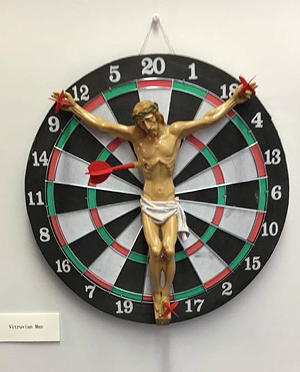
It reminds me of the Crucified Chicken controversy from several years ago.
More: NJ.com
Posted By: Alex - Tue Apr 26, 2016 -
Comments (15)
Category: Art, Religion
Jumpy the Dog Artist
I recently posted about DogVinci the Dog Artist, but I think Jumpy is actually a better artist.Jumpy's owner is dog trainer Omar von Muller.
Posted By: Alex - Mon Apr 11, 2016 -
Comments (7)
Category: Art, Dogs
More Art of the Insane
Following up on Paul's post yesterday about the Electric Pencil. Here's some art created by patients in the criminally insane ward of St. Elizabeth Hospital in Washington D.C., mid-1930s.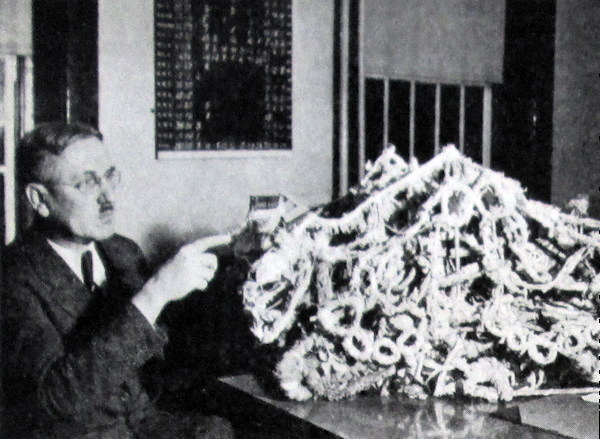
A "working model of the fourth dimension," examined by Dr. John E. Lind.
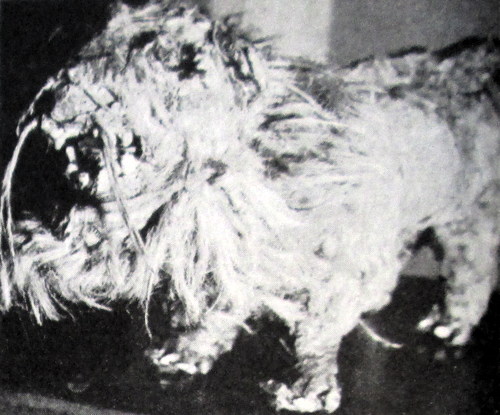
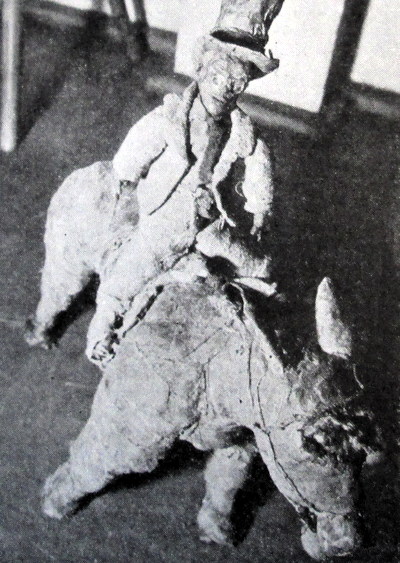
A lion (top) and a man on a horse (bottom), created by a "shellshocked, cop-killing veteran" out of chewed toilet paper, hair from clothes and blankets, and cellophane. "Jealous of his accomplishments, the veteran guards his work as assiduously as a setting hen; it must be taken from him while he is asleep."
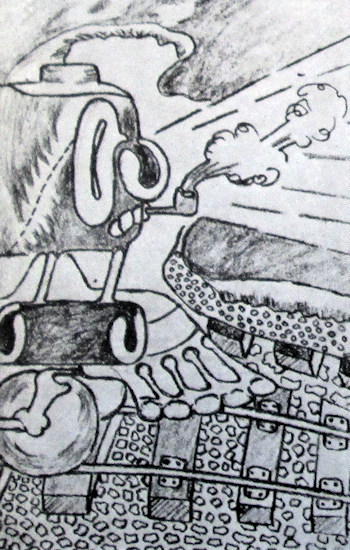
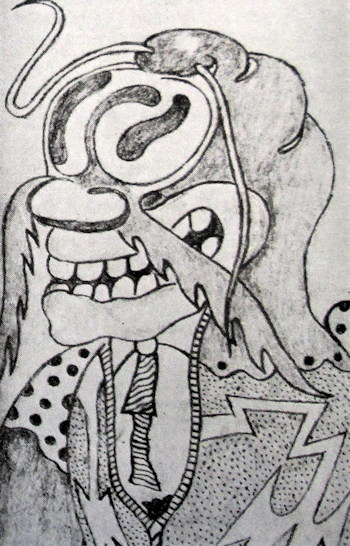
A locomotive (top) and "something that looks like a caricature of a capitalist" (bottom) drawn by "a mental 10-year-old."
Source: Newsweek - Jan 9, 1937
Also see the earlier post, Art of the Insane, to compare artwork from patients at St. Anne Hospital in France, mid-1940s.
Posted By: Alex - Wed Mar 30, 2016 -
Comments (5)
Category: Art, 1930s
Cat Who Is Artist
Another animal artist, to complement Alex's canine.
Posted By: Paul - Wed Mar 23, 2016 -
Comments (3)
Category: Art, Cats
DogVinci, the Dog Who Paints
Here at WU we've considered the art of a number of non-human species, including rats, otters, and horses. But not yet dogs. So it seems appropriate to give a nod to Dagger II (aka DogVinci) who's been making headlines lately as a canine artist. You can see some of his work at his Facebook page.The only other canine artist I'm aware of is Alexis Boyar, who rose to fame back in 1974. I've got an article about Boyar over at the Museum of Hoaxes — the hoax being that Boyar won a prize in an art competition, having failed to disclose on the entry form that he was a dog.

Posted By: Alex - Mon Mar 21, 2016 -
Comments (7)
Category: Animals, Art
Sofa Fort Art
Emily Binks recently won Scotland's largest art prize, the Glenfiddich Residency Award, worth £10,000, for her sculptures that consist of abandoned pieces of furniture piled on top of each other.Her sculptures remind many of the "sofa forts" that children like to make. In fact, a representative of the award program specifically called attention to this resemblance: "Her sculptural assemblage invokes a basic fundamental of the human condition: from building dens as children to setting up homes as independent adults, we can all relate to the creation of a place to shelter and a sense of belonging."
More info: Press and Journal, TYWKIWDBI

Posted By: Alex - Wed Mar 16, 2016 -
Comments (7)
Category: Art, Furniture
Personal Space Preference Cards
Created by Sydney-based artist Michael Pederson, who likes to create odd signs and leave them in public places. He calls them his "public projects."More about him here and here.
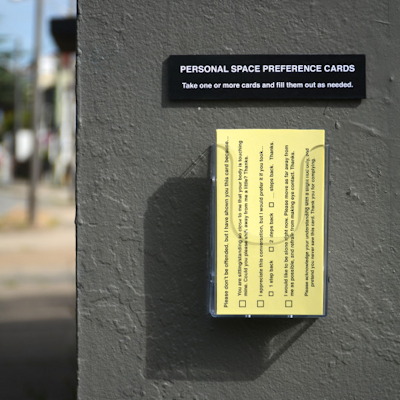

Posted By: Alex - Fri Feb 26, 2016 -
Comments (10)
Category: Art

| Who We Are |
|---|
| Alex Boese Alex is the creator and curator of the Museum of Hoaxes. He's also the author of various weird, non-fiction, science-themed books such as Elephants on Acid and Psychedelic Apes. Paul Di Filippo Paul has been paid to put weird ideas into fictional form for over thirty years, in his career as a noted science fiction writer. He has recently begun blogging on many curious topics with three fellow writers at The Inferior 4+1. Contact Us |




